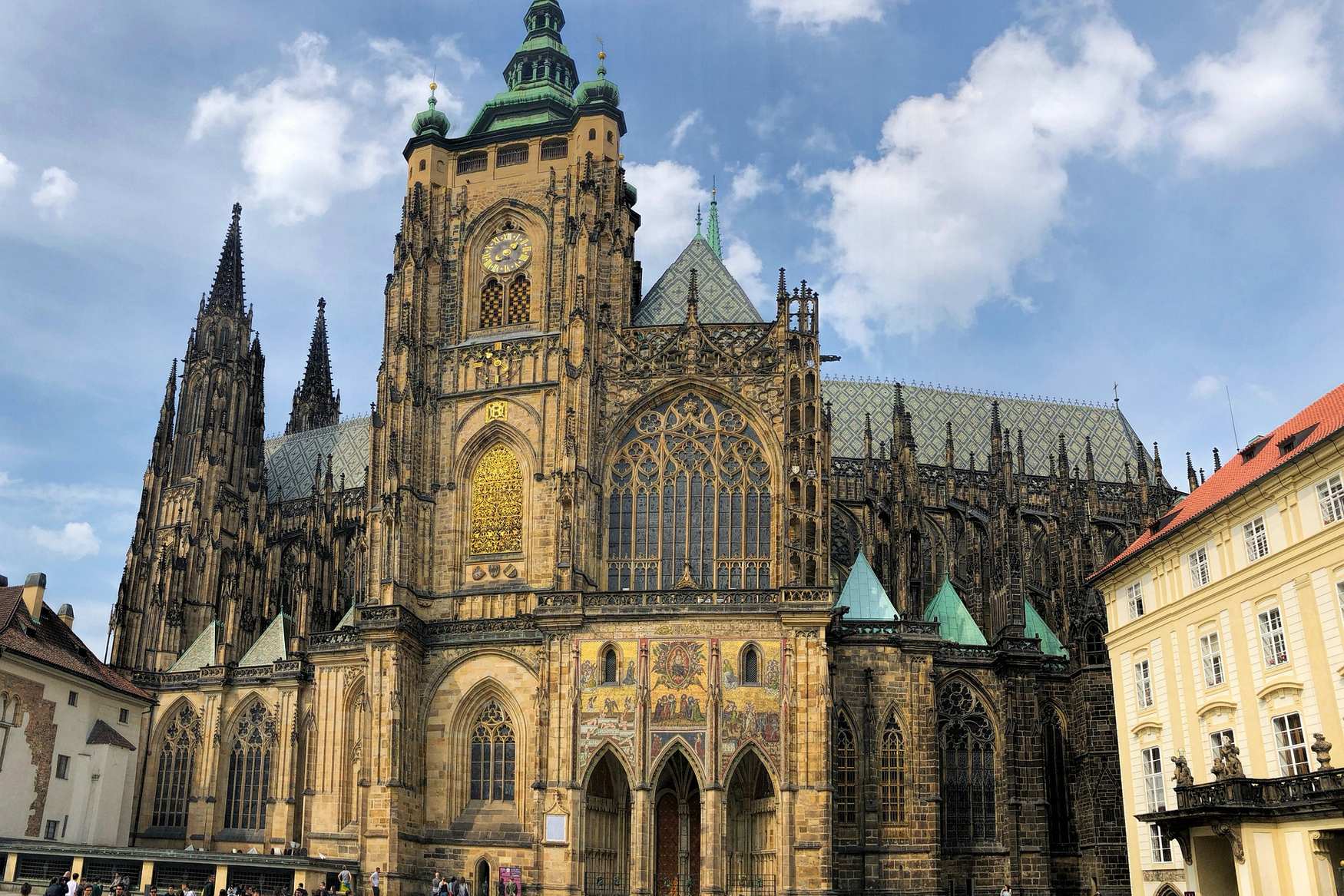- What is St Vitus Cathedral famous for?
- Why It Might Be Interesting for Kids
- Saint Vitus Cathedral Timeline
- Historical Significance
- Architectural Design
- Inside The Saint Vitus Cathedral
- Art and Craftsmanship
- Religious and Cultural Impact
- Ceremonies and Events
- Legends and Stories
- Preservation and Conservation
- Best Time to Visit
- How Long Does It Take to Visit?
- Is St Vitus Cathedral Worth Visiting?
St Vitus, St Wenceslas, and St Adalbert Cathedral stand as remarkable monuments of Gothic architecture. This grand cathedral is a spiritual symbol and a repository of history and art that speaks to visitors of all ages. Rising majestically above the Prague Castle complex, the largest ancient castle in the world captivates families with its stunning stained glass windows and intricate stonework, offering a journey through a rich tapestry of medieval craftsmanship.
With spires soaring to the heavens, it is a place where history and legend intertwine. It's a site dedicated to the Patron Saint of Bohemia, where the echoes of the past resonate in the grandeur of the present. As the final resting place of many Bohemian kings and Holy Roman Emperors, this cathedral also holds the esteemed Chapel of St. Wenceslas, home to the Crown Jewels reserved for the coronation of Czech kings. The cathedral has witnessed centuries of coronations, royal weddings, and significant historical events, making it an essential stop for families exploring the cultural heritage of Prague.
The visit to this cathedral offers a unique educational experience for children, igniting their imaginations with stories of patron saints and the intricate details of its Gothic towers. A visit to learn about the history and significance of St. Vitus Cathedral can signify an unforgettable adventure in understanding the nation's heritage and the architectural wonders of the past, making it a must-see for families seeking a blend of education and inspiration in their travels.
Contents
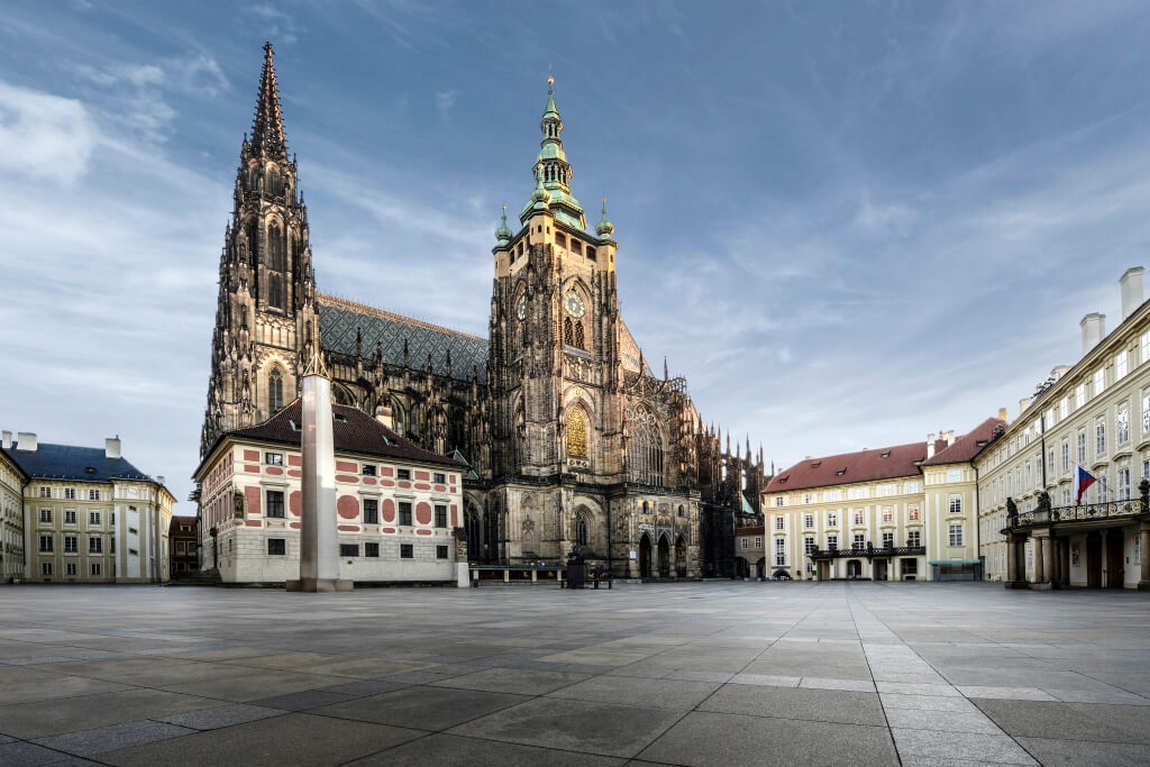 Photo:https://www.hrad.cz
Photo:https://www.hrad.cz
What is St Vitus Cathedral famous for?
St Vitus Cathedral is the largest temple in Prague. It is a monumental beacon of Gothic architecture, capturing visitors' attention in Prague with its striking presence. As the largest church in the Czech Republic, the cathedral serves not only as the seat of the Archbishop of Prague but also as a central repository for Czech history and art.
First and foremost, families exploring the site can marvel at the cathedral’s intricate design, featuring flying buttresses and beautiful stained-glass windows, including the famous work by Alfons Mucha portraying the Slavic Peoples. The significance of St Vitus extends beyond its walls, as it houses the tombs of Bohemian kings and Holy Roman Emperors, linking every stone of this structure to the storied past of the nation.
Notably for parents and children alike, the cathedral’s towers present a magical skyline against the Prague backdrop, especially when the sun sets, and the shadows of the spires stretch across the castle grounds. Interactive guides often regale visitors with tales of the patron saint, Saint Vitus, a revered figure whose legends resonate within the cathedral dedicated in his honor.
Additionally, the cathedral is known for its extraordinary acoustics, making it an enchanting venue for classical concerts that bring historic music to life, captivating both the young and old.
For those planning to visit, the Prague Castle website provides current visiting hours and details on special tours that are both educational and engaging for families journeying through the Czech capital.
Why It Might Be Interesting for Kids
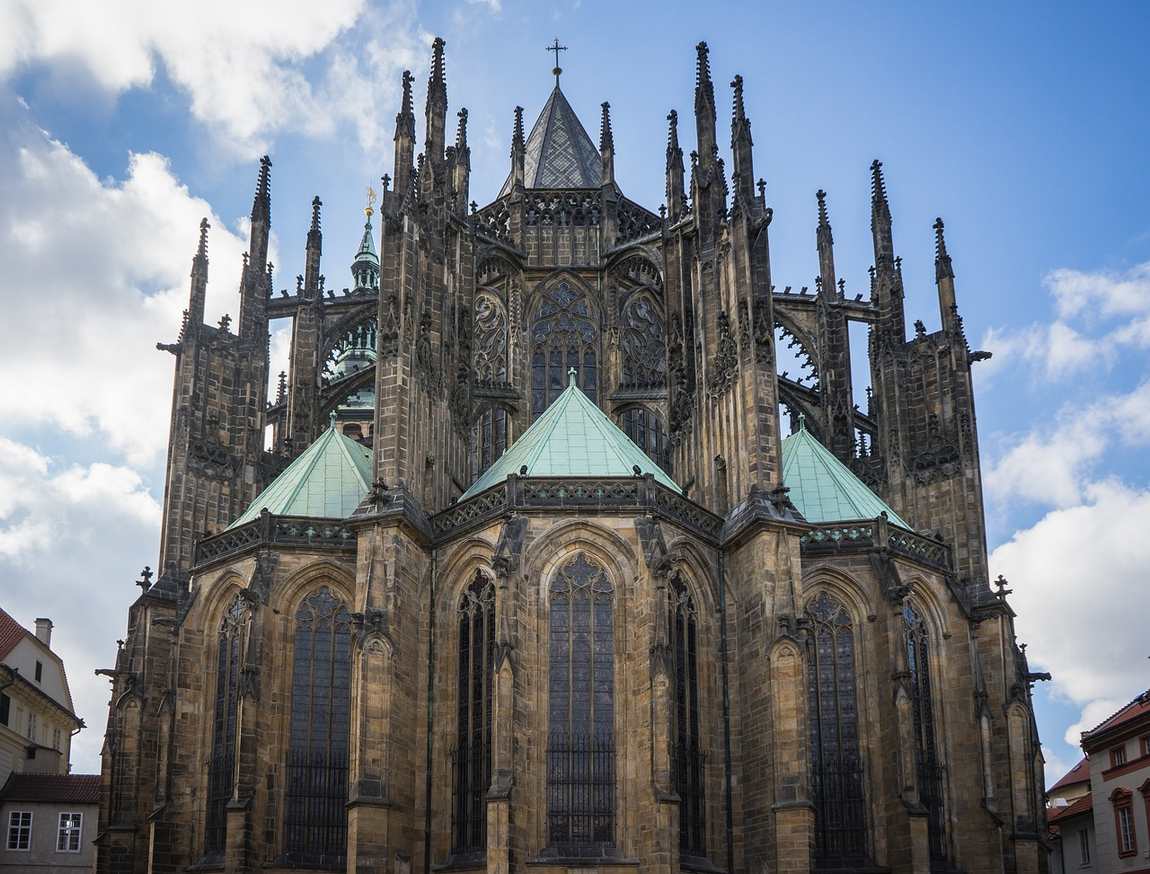 Photo:https://pixabay.com
Photo:https://pixabay.com
With its grandeur and history, the temple can captivate the imaginations of children of all ages. Kids who love stories of knights and royalty will be enchanted to know that this cathedral is the traditional coronation site of Czech kings and queens. Moreover, Gothic architecture is like a page from a fairy tale.
- History Comes Alive: For children aged 8 and up, the cathedral provides a tactile history lesson. They can stroll through the same halls as ancient monarchs.
- Architectural Marvel: The intricate designs and towering spires will spark curiosity in youngsters, particularly those with a keen eye for art or engineering.
- Stained Glass Stories: Kids will be mesmerized by the stained glass windows that adorn the cathedral. Each panel tells a story that can ignite discussions about art, history, and faith.
- Connection to Patron Saint: For the curious child intrigued by legends, learning about Saint Vitus, the patron saint of dancers and entertainers, can be fascinating.
- Crown Jewels: For the little ones with a fascination for treasures, the cathedral’s role as the home to Czech Crown Jewels will be particularly intriguing.
Visiting St. Vitus Cathedral (Katedrála SV) offers a unique opportunity for families to explore a place that is not only steeped in history but also boasts elements that can thrill children's imaginations. It’s a chance to weave together education and adventure, ensuring a memorable experience for the entire family.
Saint Vitus Cathedral Timeline
- 925: The original church was founded and dedicated to Saint Vitus by Duke Wenceslaus I of Bohemia.
- 1060: This structure was replaced by an enormous Romanesque basilica.
- 1344: On November 21st, a cornerstone for the present-day Gothic Cathedral was laid.
- 1419: Work on the cathedral was interrupted by the Hussite Wars.
- 1929: After centuries of interruptions, the cathedral was finally consecrated.
- 1930s: The cathedral's interior saw significant renovations.
- 1954: Art historians began extensive restoration projects.
- 1997: Saint Wenceslas Chapel's 650th anniversary was solemnly celebrated.
- 2012: A new window by artist František Kodym was unveiled.
- 2013: The 700th anniversary of the birth of Charles IV, who commissioned the cathedral, was marked by various cultural events.
Within these walls, families can trace nearly a millennium of history, bearing witness to the artistic and spiritual endeavors that have shaped this sacred site.
Historical Significance
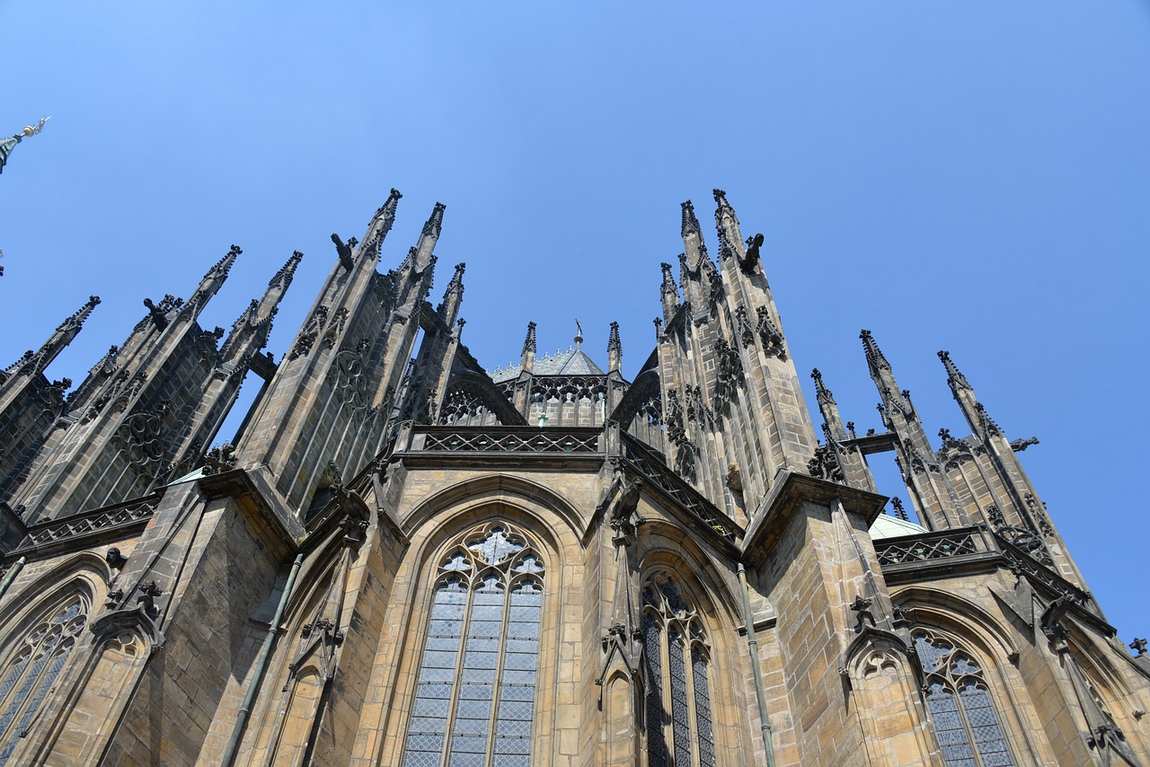 Photo:https://pixabay.com
Photo:https://pixabay.com
The temple serves as a religious symbol and marks the historical evolution of Czech architecture and monarchy. As Prague’s largest church, it has witnessed numerous coronations, and its construction history is intertwined with significant figures in Bohemian heritage.
Foundation and Patrons
The initial foundation was laid by Wenceslaus I, Duke of Bohemia, aiming to house Saint Vitus's relics and serve as a family mausoleum. The patron saints, to whom the cathedral is dedicated, epitomize the sanctity and are deeply rooted in the Czech spiritual tradition. Wenceslaus I's ambition to elevate the spiritual status of his reign was a precursor to later expansion under the patronage of influential Czech monarchs.
Construction and Architects
The cathedral's construction commenced in 1344 on the site of the original Romanesque rotunda under the rule of Charles IV. His aspiration to transform Prague into an imperial capital was supported by the skills of Matthias of Arras — invited from Avignon — and continued by the famous German architect Peter Parler. Their innovative designs contributed to the cathedral's prominence as a masterpiece of Gothic architecture.
Czech Monarchy and Coronations
St. Vitus Cathedral has historically held an illustrious role within the Czech monarchy. Functioning as the coronation church for Bohemian kings, each ceremony added to the cathedral's prestige. The sacral building encapsulates the luxury of the royal events, marking it as a pivotal site for Czech history and identity.
Visitors often find themselves engrossed in the cathedral's narratives, where ancient stonework whispers tales of royal aspirations and providence—a family outing not just to see but to experience layers of history.
Old Royal Palace and New Royal Palace are within walking distance. Include these sites in your itinerary too.
Architectural Design
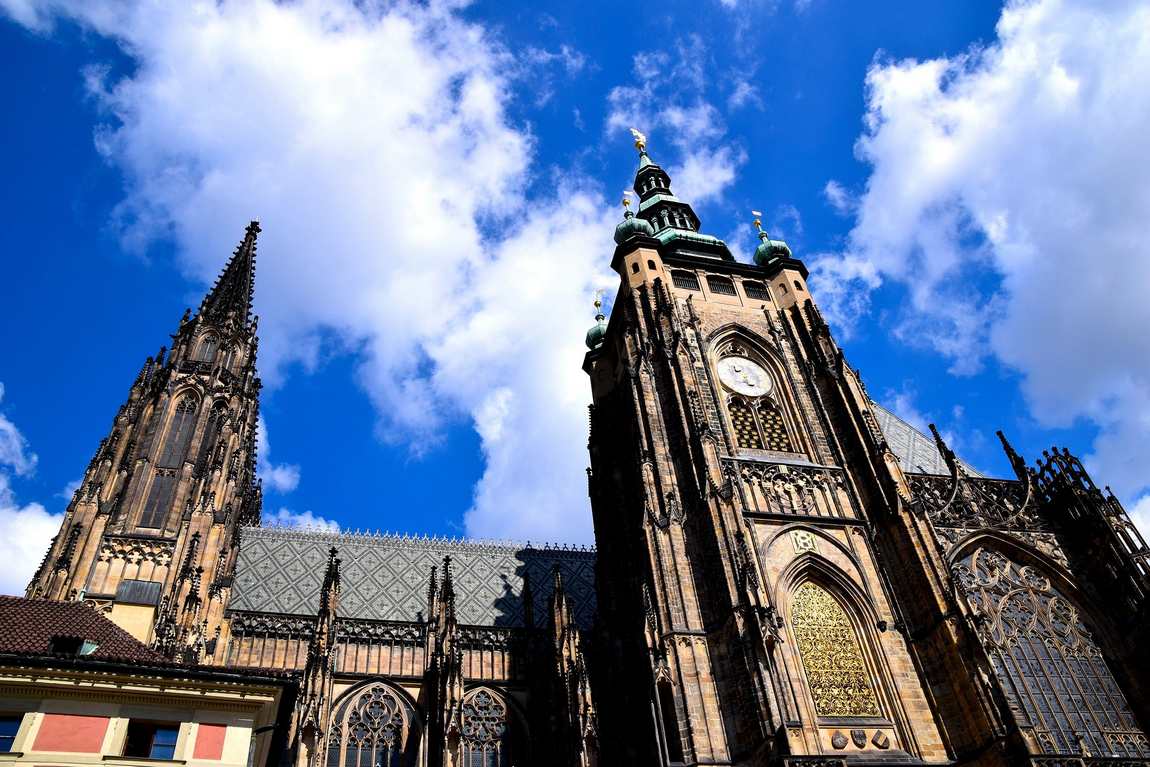 Photo:https://pixabay.com
Photo:https://pixabay.com
The Cathedral stands as a pinnacle of architectural achievement, showcasing the evolution of Gothic design with successive Renaissance and Art Nouveau influences.
At its core, the temple is a prime example of Gothic architecture, its origins rooted in the French Gothic style, which can be traced back to its cornerstone, which was laid in 1344. The involvement of Matthias of Arras marks this era of the cathedral's construction. Later, Peter Parler, whose influence is evident in the characteristic pointed arches, flying buttresses, and the towering verticality that compels visitors' gazes upward.
Later Architectural Additions
While Gothic elements remain dominant, the cathedral was completed in the 19th and 20th centuries, when it embraced additional styles. The Renaissance left its imprint during this extended building phase, alongside subsequent Art Nouveau modifications. These varied styles contribute to the cathedral's layered history and fascinate families with the stories each addition tells.
Great South Tower
The Great South Tower is an architectural tour de force, dominating the skyline at 96.5 meters tall. It is renowned for its grandeur and housing the cathedral's largest bell, Zikmund, which dates back to 1549 and is still in use today.
Exterior Features
The facade impresses with a blend of originality and homage to past designs. The Western Facade is particularly striking, with its three massive portals and the stunning Rose Window above, capturing onlookers with its intricate patterns that filter light into a celestial display inside. Additionally, the exterior houses several statues and gargoyles, each a spectacle that inspires the imagination of both the young and old.
Inside The Saint Vitus Cathedral
 Photo:https://pixabay.com
Photo:https://pixabay.com
Venturing inside Saint Vitus Cathedral, visitors are greeted with a trove of historical and architectural marvels. From kings' resting places to the Golden Portal's intricate artistry, each subsection of this grand cathedral tells a story of faith, power, and art spanning centuries.
Royal Mausoleum
The Royal Mausoleum is a place of solemn beauty and regal history. Here lay members of Czech royalty encased within an area filled with artistic and architectural splendor. The Mausoleum is a touchpoint for the national identity, deeply connected with Prague Castle, the centuries-old seat of power.
Golden Portal
Adorned with a stunning mosaic that glimmers in the sunlight, the Golden Portal serves as the main entrance to the cathedral from the south. This exquisite artistry begins a journey into the heart of Czech spiritual tradition. It sets a precedent for the beauty within.
Main Nave
The Main Nave of Saint Vitus creates an awe-inspiring atmosphere with its Gothic vaults stretching upwards, inviting eyes and spirits to ascend. It's a spacious area where families can marvel together at the grandeur of the proximity to the divine.
Crown Jewels Chamber
The door in the southwestern corner of the chapel leads to the Crown Jewels Chamber, the repository of the Bohemian Crown Jewels, among the oldest in Europe. Though the chamber isn't open to the public, its existence adds a layer of mystique to the cathedral's long-standing significance.
Giant Bell
Dominating the south tower is 'Zikmund,' the Giant Bell, weighing approximately 15 tons and named after King Sigismund. Cast in 1549, it is the largest bell in the Czech Republic. It rings only on special occasions, resonating with history and significance.
Archbishopric and Governance
Finally, the cathedral is an architectural wonder and the center of the Roman Catholic Archbishopric of Prague. As a seat of ecclesiastical authority, it governs the spiritual life of the region. It stands as a symbol of the long-standing bishopric that shapes the religious tapestry of Prague.
Art and Craftsmanship
St. Vitus Cathedral showcases a stunning collection of art and craftsmanship that spans centuries, with masterpieces ranging from medieval stained glass windows to baroque paintings. Each element within the cathedral's walls tells a unique story, contributing to the grand tapestry of Czech history and culture.
.jpg) Photo:https://pixabay.com
Photo:https://pixabay.com
Stained Glass Windows
One of the most prominent features of St. Vitus Cathedral is its stained glass windows. The intricate designs illuminate the interior with vibrant colors, particularly the window designed by Alfons Mucha, known for its exquisite detail and Art Nouveau style. Visitors are often captivated by how the sunlight filters through these captivating windows, casting a kaleidoscope of colors across the stone floor.
Paintings in the Cathedral of St Vitus
The walls and altars of St. Vitus are adorned with various paintings depicting various religious scenes and figures. These paintings not only serve as devotional images but also as a showcase of the evolving art styles throughout the cathedral's history. They provide an insight into the beliefs and artistic trends of the times they were created.
Chapel of St. Wenceslas
St. Wenceslas Chapel is a cult center of St. Vitus Cathedral. It holds a special place within the cathedral, as it is the final resting place of the patron saint of Bohemia. This sacred chapel is a marvel, with intricate reliefs adorning the walls and a heavily decorated altar. The precious gems and exquisite paintings within the chapel emphasize the importance of St. Wenceslas to the Czech people.
Sculptures and Reliefs
Visitors can admire various sculptures and reliefs throughout the cathedral that detail important religious figures and events. Notable amongst these is the Royal Mausoleum, with its beautifully carved figures representing Bohemian kings and queens. It is a testament to the skill of the sculptors who contributed to St. Vitus Cathedral over the centuries. These sculptures offer families a tangible connection to the past, allowing kids to see the stories of history brought to life.
Religious and Cultural Impact
St. Vitus Cathedral holds an esteemed place in both the religious and cultural life of the Czech Republic. It marks a site where history, spirituality, and art converge, reflecting the legacy of one of Prague's most significant landmarks.
Relics and Sacred Objects
The cathedral is a grand architectural feat and a treasure trove of sacred objects and relics. Most notably, it houses the Bohemian Crown Jewels, a testament to the nation's royal heritage and its deeply intertwined history with the Catholic faith. Within its thick walls, visitors find a rich tapestry of history laid out in the many altars and statues, each telling a tale of piety and patronage. The relics of Saint Wenceslas, the patron saint of Bohemia, lie in a chapel dedicated to him, and his cherished connection to the cathedral heightens its spiritual significance.
Pilgrimage and Patronage
As a historical pilgrimage site, the temple draws in countless families who come to revel in its liturgical significance and seek the blessings of the patron saints enshrined within its Gothic walls. For parents and children alike, the sense of wonder is palpable when approaching the cathedral's magnificent shrine. The stories of Saint Vitus, after whom the cathedral is named, are an essential part of the fabric of this place, and his legacy reinforces the cathedral’s standing as a beacon of heritage and faith. Visitors often leave with a profound sense of connection to the centuries of worshippers and patrons who have contributed to the growth and glory of this living monument.
Ceremonies and Events
The temple is not only a historical monument but also a living venue for significant ceremonies and events that mark the spiritual and royal chronicles of the Czech Republic. Whether one witnesses the grandeur of royal events or the solemnity of religious ceremonies, each occasion is enveloped by the cathedral's Gothic splendor and centuries-old narrative.
Royal Events
It serves as the traditional Coronation Church of the Bohemian monarchs, with a legacy of royal events gracing its hallowed spaces. Here, the crown jewels sparkled atop the heads of kings and queens, and grand feasts illuminated the lives of notables like Wenceslaus and Adalbert. Heartfelt family moments can be appreciated in knowing that the very place they stand is where rulers of yesteryear stepped into the annals of history.
Religious Ceremonies
Visitors may encounter the transcendent beauty of religious ceremonies within the cathedral's towering walls, the most profound being the holding of Mass. During these moments, families can truly grasp the cultural and spiritual resonance of the cathedral, observing as the Archbishops preside over services that follow traditions centuries in the making. Keen ears can catch the harmonious choral arrangements that complement the ceremonies and accentuate the cathedral's ambiance.
Legends and Stories
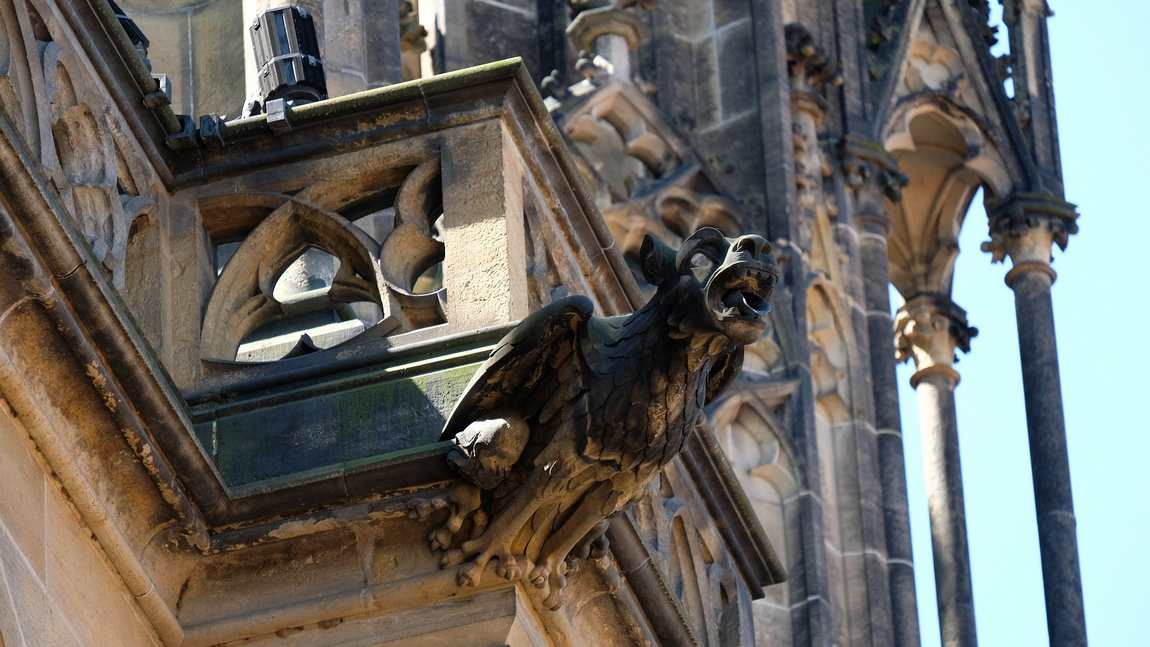 Photo:https://pixabay.com
Photo:https://pixabay.com
This place in Prague is not just an architectural marvel; it's a repository of myths and hallowed tales passed down through generations. Each story and legend connected to this Gothic masterpiece adds a layer of mystical allure to its towering presence.
Saint Wenceslaus and Martyrdom
Saint Wenceslaus, the revered Duke of Bohemia, became a symbol of Czech statehood and a national martyr after his assassination. His remains are interred at St. Vitus Cathedral. On this sacred site, visitors often reflect on his legacy of leadership and moral fortitude. Folklore immortalizes him as a protector of the Czech lands, whose spirit is thought to rise in turmoil to defend the nation.
Supernatural Tales
Tales of the supernatural weave through the history of St. Vitus Cathedral. Whispered legends tell of a hidden chamber within the cathedral that houses a treasure enthroned amidst a slumbering army. This legendary force, it is said, will awaken to protect Prague when its need is greatest. Such stories invite families to imagine the cathedral as a place of worship and a magical cornerstone of Prague's storied past.
Preservation and Conservation
St. Vitus Cathedral, an enduring symbol of cultural heritage, has undergone significant conservation work to preserve its splendor for future generations. The cathedral is a testament to historical preservation, where experts meticulously maintain its Gothic architecture and artistry.
- Mosaics and Stained Glass: Preservation efforts shine through the vibrant hues of the cathedral's stained glass windows. The iconic work of art, known as the St. Wenceslas window, underwent careful restoration to safeguard its narrative of Czech patron saints. Attention is also given to the unique aspects of the St. Vitus Mosaic, protecting it against environmental wear.
- Structural Integrity: Safeguarding the structural elements of this historic marvel includes fortifying its flying buttresses and ornate spires. Stone replacement, a critical part of maintaining the cathedral’s integrity, ensures the longevity of its intricate sculptures and carvings.
- Visitor Experience: To ensure that families fully appreciate its grandeur while preserving the site, buffered walking paths and viewing areas have been introduced. It allows visitors to experience the cathedral’s magnificence while minimizing the wear and tear on its ancient flooring.
- Education and Outreach: Educational initiatives highlight the importance of preserving such an invaluable cultural treasure by engaging with the public, especially the younger crowd. Interactive tours and informational displays help to instill a sense of stewardship in all visitors.
Through these persistent efforts, this Gothic masterpiece retains its illustrious presence in Prague, inviting families to connect with a pivotal piece of history while ensuring its continued legacy.
Best Time to Visit
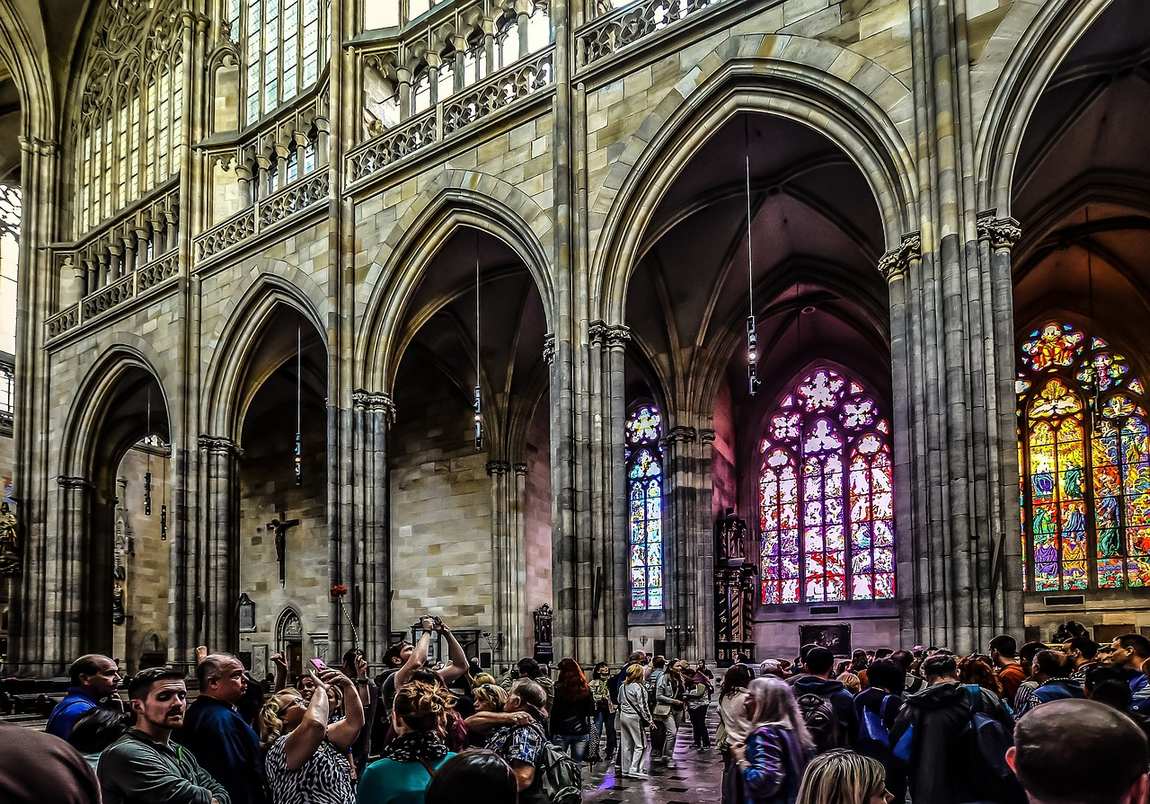 Photo:https://pixabay.com
Photo:https://pixabay.com
Visiting this place can be a highlight for families exploring Prague, with its awe-inspiring architecture and rich history. To make the most of their experience, families should consider the time of year and day that best suits a peaceful exploration, especially with kids in tow.
Seasonal Considerations: Spring and fall are ideal seasons to visit the temple. The weather is usually mild, and the site is less crowded than the bustling summer season. The calm aura during these months allows families to immerse themselves in the cathedral's wonders without the overwhelming hustle of peak tourist times.
Weekly Schedule: Weekdays are preferable over weekends for those preferring a quieter visit. Visitors might find that mornings after opening offer a serene atmosphere.
- Morning Visits: Tuesday to Friday, at 9 am during summer (April - October) or at 9 am during winter (November - March).
- Afternoon Visits: Weekday afternoons can be less crowded, allowing families a more relaxed experience.
Remember that liturgical events might affect visiting hours, especially on Sundays and religious holidays. Checking the official schedule before planning a visit is recommended to avoid any unexpected closure or restricted access.
Ticket Purchases: To avoid queues, buying tickets online in advance could save time. With a ticket, families can explore additional sections of the Prague Castle complex, creating a well-rounded and memorable outing.
By strategically selecting their visit time, families can thoroughly enjoy the majesty of St. Vitus Cathedral with greater comfort.
How Long Does It Take to Visit?
Visiting the majestic temple in Prague is an experience to remember, especially for families looking to immerse in the cultural heritage. However, the time required to explore this Gothic masterpiece can vary.
- General Tips:
- First-time visitors often benefit from allocating at least 90 minutes to take in the grandeur of the architecture and the intricate artworks.
- Those with curious kids in tow may find they spend a bit longer, as plenty of captivating stained glass windows and historical artifacts often pique children’s interest.
- Self-Guided Tour:
- Estimated Duration: 1 to 2 hours
- It is ideal for families who prefer to explore at their own pace.
- Opportunity for children to discover at a leisurely speed, perhaps with a scavenger hunt printable found on educational websites.
- Guided Tour Options:
- Estimated Duration: about 2.5 hours.
- In-depth exploration with historical insights.
- Engaging storytelling that can keep the whole family entertained.
Children may particularly enjoy seeking out the hidden details of the cathedral, like the depiction of Prague within the stained glass. They are little detectives in the making, uncovering secrets of the past with every step.
Most importantly, families should consider the opening hours and possible crowd levels when planning their visit. They ought to check official websites for any changes in timings or special family-friendly events that could enrich their experience.
For those considering the Prague Castle complex, a more substantial chunk of the day is needed. Nonetheless, St. Vitus Cathedral itself, with its soaring spires and gothic allure, is the main event that promises an unforgettable exploration for any young and old visitor.
Is St Vitus Cathedral Worth Visiting?
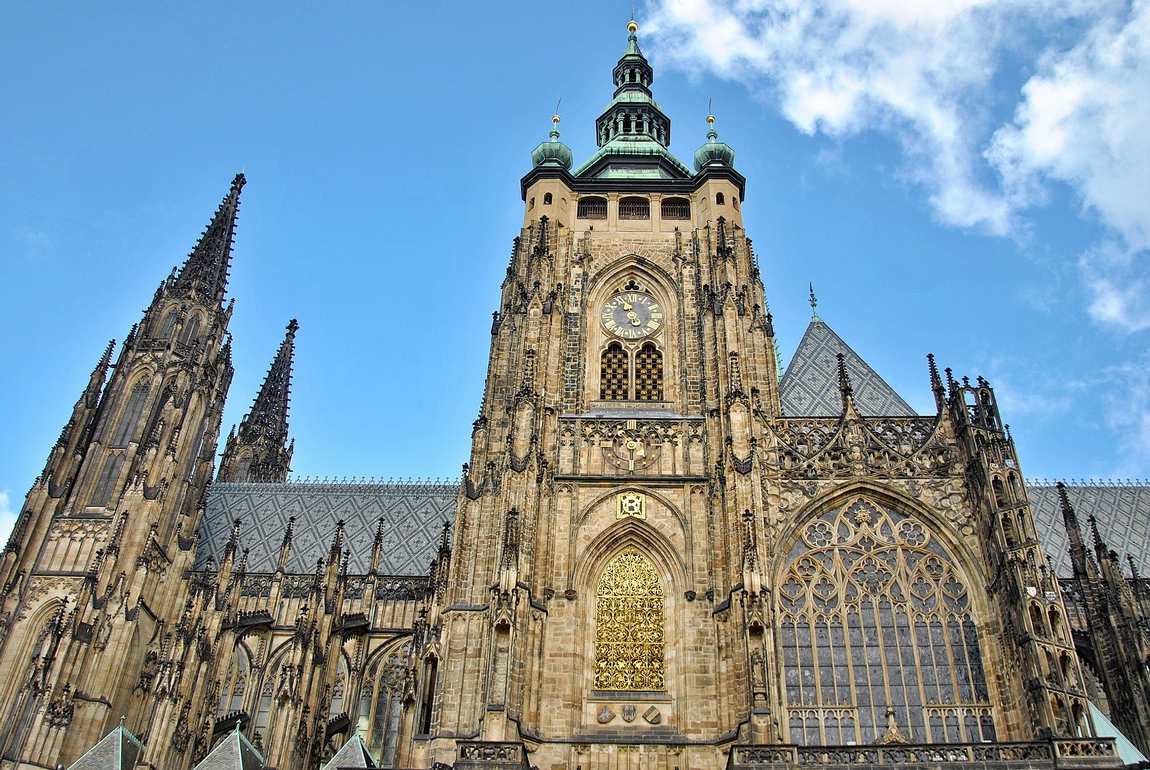 Photo:https://pixabay.com
Photo:https://pixabay.com
St. Vitus Cathedral is a remarkable tower in the heart of Prague, alluring families with its soaring spires and storied history. The majestic cathedral is not just a sight for sore eyes but a repository of art, culture, and Czech history, making it a compelling visit for anyone, especially those traveling with children.
Why Your Family Should Visit
- Architectural Marvel: The cathedral is a prime example of Gothic architecture, boasting intricate designs that can spark the imagination of the young and young-at-heart.
- Cultural Significance: As a pivotal piece of Czech history and identity, the cathedral provides a hands-on history lesson, encompassing centuries of art and a roster of significant figures resting within its walls.
- Interactive Experience: Explore the colorful stained-glass windows and the lofty heights of the cathedral towers, offering an interactive encounter that can entertain and educate simultaneously.
Visitors can immerse themselves in the cathedral's grandeur, appreciating the care and craft that has persevered for generations. It is where architectural prowess and historical narratives converge, offering a profound exploration for visitors of all ages.
Families can benefit from arriving early or booking guided tours to avoid the queue and delve right into the centuries-old narrative. Comfortable footwear is also a must for navigating the cobblestone surroundings.
The temple is worth visiting for its stunning Gothic architecture, rich historical tapestry, and family-friendly tours that bring stories to life. It’s a place where one can trace the footprints of kings, revel in the artistry of medieval artisans, and ascend to panoramic views, counting the memories as high as the bell tower.
Encouraging readers to plan their trip, this iconic landmark should be a staple on any Prague itinerary. Offering a glimpse into the past through a spectacle of light, glass, and stone, it promises to be a highlight for families seeking entertainment and enlightenment on their travels.




